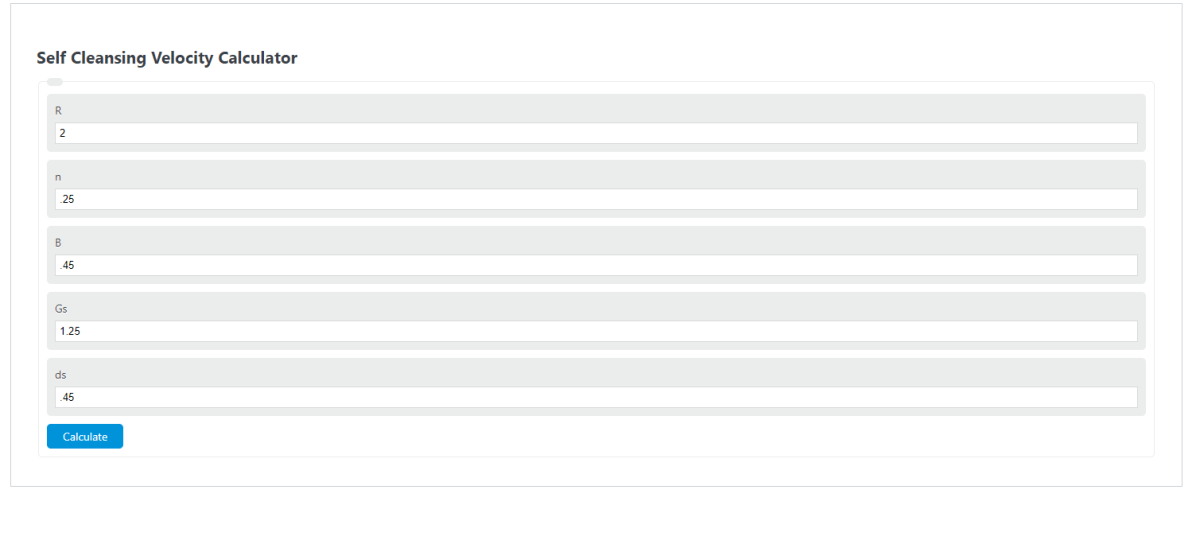Enter the hydraulic mean radius, dimensionless constant of particles, the specific gravity of the solids, manning’s roughness coefficient, and the diameter of the solids into the calculator to determine the self cleansing velocity.
- Inlet Capacity Calculator
- Dry Matter Calculator
- SDI (Silt Density Index) Calculator
- Manning’s Flow Calculator
Self Cleansing Velocity Formula
The following equation is used to calculate the Self Cleansing Velocity.
Vs = 1/n * R ^(1/6) * SQRT ( B*(Gs-1) * ds )
- Where Vs is the self cleansing velocity
- R is the hydraulic radius
- n is the Manning’s coefficient of roughness
- B is the dimensionless constant of the characteristics of the particles
- Gs is the specific gravity of the particles
- ds is the diameter of the particles.
What is a Self Cleansing Velocity?
Self Cleansing Velocity refers to the minimum velocity required in a fluid system to prevent the accumulation of sediment or debris.
It is a critical parameter in determining the efficiency and functionality of pipelines, channels, and open channels.
When fluid flows at a certain velocity, it possesses enough kinetic energy to carry away particles or sediment that may settle on the system’s surfaces.
This self-cleansing action prevents the accumulation of materials, which can lead to clogs, blockages, or reduced capacity. In other words, self-cleansing velocity ensures the continuous and unobstructed flow of fluids through a system.
By maintaining an adequate self-cleansing velocity, pipelines and channels can operate optimally.
How to Calculate Self Cleansing Velocity?
Example Problem:
The following example outlines the steps and information needed to calculate
First, determine the variables in the equation above:
R = 2
n = .25
B = .45
Gs = 1.25
ds = .45
Finally, using the formula above, calculate the self cleaning velocity:
Vs = 1/n * R ^(1/6) * SQRT ( B*(Gs-1) * ds )
Vs = 1/.25 * 2 ^(1/6) * SQRT ( .45*(1.25-1) * .45 )
Vs = 1.0102
